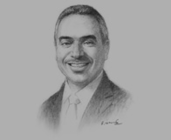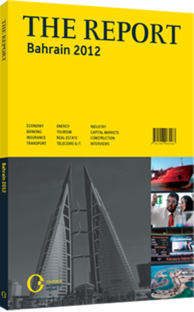OBG talks to Essam bin Abdulla Khalaf, Minister of Works

Interview: Essam bin Abdulla Khalaf
What measures is the ministry pursuing to help alleviate road congestion?
ESSAM BIN ABDULLA KHALAF: We have completed a number of projects aimed at reducing traffic congestion and bottlenecks. Continuing with the strategic master road plan, some of the projects currently under way include the North Manama Causeway, the King Faisal Highway expansion and the Mina Salman Junction. The design stages for a number of other projects have also been completed and are ready to be implemented, such as changing the Alba and Nuwaidrat roundabouts to multi-level interchanges, and converting roundabout 18 in Hamad Town to an interchange.
By expanding the road network and changing junctions from traffic signals to flyovers and underpasses, we are alleviating traffic congestion. However, Bahrain is a small island and we cannot have flyovers everywhere. There must be alternative transportation methods to reduce the number of vehicles on the road. Statistics have shown that by the end of 2011, Bahrain had more than 478,000 vehicles for a population of 1.1m. That equates to two vehicles for every three people, which is one of the highest levels of automotive concentration in the world.
How does public transportation factor into the Kingdom’s master plan?
KHALAF: Our studies have shown that the total contribution of public transport to overall transport demand in Bahrain is as low as 5%. That figure must be increased. According to the ministry’s integrated transport study, the level of usage of public transportation would need to increase to 25% of all journeys by 2030. The study highlighted six main transit lines that need to be implemented, and will cover the most important destinations around the Kingdom: the city centre, the airport, the University of Bahrain, Isa Town and Hamad Town, just to name a few. Right now we are determining whether we will build a new light rail system or improve the current bus transit system.
What success has the Ministry had to date with public-private partnerships (PPPs) and how can the private sector get involved in the future?
KHALAF: The Ministry of Works and the Ministry of Finance awarded the first PPP in 2011 for the Muharraq Sewage Treatment Plant (STP) to a consortium formed by South Korea’s Samsung Engineering, the UAE’s Invest AD and the UK’s United Utilities. The Muharraq plant will serve the new industrial park, the international airport and a large residential area in Manama. The project will upgrade and operate a portion of the city’s wastewater network, which will also reduce the overload on the existing Tubli STP.
Upon completion of the Muharraq STP, aimed for completion by the fourth quarter of 2013, we will evaluate the project and decide on the feasibility of future PPPs. While not all projects will be tendered, the operation and maintenance of development projects, such as the Muharraq STP, will always fall to the private sector. We believe that the private sector will be more efficient with managing such projects.
What other construction projects are being pursued in the sanitation sector?
KHALAF: The ministry has just appointed two consultants, one for the Lawzi STP in Hamad Town and another one for Northern Town. We are also currently expanding the existing Tubli STP from 200,000 cu metres per day to 400,000 cu metres per day. Our decision on whether to pursue a PPP model or to complete the project through the Ministry of Finance will depend on budget constraints.
Although 2011 was a difficult year for us, we are largely satisfied given that the number of tenders exceeded that of 2010. In 2011 81 tenders were awarded, as opposed to just 61 in 2010. Likewise, the number of tenders issued in 2011 far exceeded tenders issued the previous year (104 as opposed to 74). We are continuing our strategy to increase the number of tenders to help stimulate the private sector here.
You have reached the limit of premium articles you can view for free.
Choose from the options below to purchase print or digital editions of our Reports. You can also purchase a website subscription giving you unlimited access to all of our Reports online for 12 months.
If you have already purchased this Report or have a website subscription, please login to continue.

